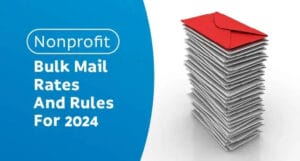Starting a design project without a creative brief is like going shopping without a shopping list! You’ll have to guess and improvise most of the time. Moreover, you’ll waste both time and money, dealing with lots of revisions of the project deliverables.
A creative brief is a one-two-page written document that sets up your design project for success.
It’s the roadmap of your project that sets clear expectations and requirements. It covers all the goals that the project should achieve. Also, it helps to gain a solid understanding of the project scope and intended audience and sets things for a great design.
Also, it ensures that all the stakeholders are on the same page and helps the project to stay on schedule. The Creative Brief endorses all the aspects the creative team needs to know about the desired end-results.
Lastly, it’s a standard agency practice. It’s a document developed by the creative team or the client or quite frequently together.
A good creative brief is clear and specific enough to lead the creative process in the right direction. It anticipates potential challenges and provides possible solutions. On the other hand, a bad creative brief is incomplete, confusing or ambiguous.
Keep reading, and I’ll guide you through a step-by-step process for writing creative briefs.
Read also SETTING UP YOUR BROCHURE MARKETING FOR SUCCESS
In the meeting phase with the creative team, clarify all the aspects of the project mentioned below:
WHY developing the Project? Summarize all your reasons in the Project Overview. What does precisely your company? What size is your company, how long you’ve been in the business? How did you get started? What’s your product or service?
Outline the problem you are trying to solve. Keep it short to a maximum of three sentences. “Company X, a local SaaS company for over three years on the market, have difficulties in generating new leads. Requires a Marketing Brochure Design to launch its new service packages.”
Purpose of Marketing Brochure Design
WHAT is the purpose of the project and how it will be measured. The goal of the campaign should describe clearly what results does the client expect: to raise awareness, build brand recognition, test a new product, get new clients, or get in touch with the old ones.
Define the goal of the creative brief by completing the sentences:
We want [the audience – who] to [do what] to [benefit how].
Therefore, what deliverables should be produced? List the exclusive scope of the project:
- List all deliverables in digital and/or printing forms: samples, presentations, mood boards, mock-ups, final products;
- Format and size of the deliverables – 4’’x6’’ full-color postcard, 5’’x7’’ flyer, 8-page full-color self-mailing 5.5″ x 8.5″ brochure.
- What kind of files are needed: JPG, PSD.
- The extent of the campaign: is it integrated with other digital marketing channels?
- The distribution channels: USPS, personal distribution and handouts.
WHO is the targeted audience? Specify the gender, age, stage of life of your audience, add if needed location. Refine the targeting with lifestyle criteria: their daily activities and routines, interests and hobbies, opinions, values, and beliefs, goals, and challenges, if they are relevant to the message and design of your project. What the audience thinks, feels and does.
HOW to deliver the message. What’re the key takeaways?
a) Understand the Brand Personality: tone and the voice of the campaign. Everything in the body copy and the design should bring to life the brand personality. The tone must transpire not only through the copy but in all design elements too:
- Friendly, bold and adventurous for younger professionals
- Formal and techy for executives
- Rustic and chic for older householders
- Youthful and energetic for experimentalists.
b) Do you have a Visual Style Guide? What color scheme is intended for the project? Do you have some color preferences (likes and dislikes)? The colors of the mail piece should reflect the tone of the campaign. For instance, muted colors and black & white are used for a serious look and feel, more suitable for business mailers. Bright and colorful designs are engaging and funny and more appropriate for informal offers.
c) The most important thing to show or to say. One single thing to remember: reasons to try, or buy. Include critical points of the essential reasons/benefits to respond to the ad:
- Dollar deal, or
- Time Saver, or
- Waste recycling, or
- Other considerations.
d) Call to Action. Write down the specific call to action, like clear steps what to do next to take advantage of the special offer. What response do you expect and what action do you want the audience to take? Moreover, how do you want the ad to be perceived by your audience? What should the ad make them think, feel and do?
WHEN. Set the timeline for completion and the managing and creative team. Include a realistic schedule for your project with a realistic number of hours/days for completion. It’s important to know who’s responsible for the project and contact person for approval. Who’s managing, what part, who should sign and submit the work? Write down all the names and their contact information.
HOW MUCH. The final part, the budget. Specify all the tasks and the costs (including revisions) of each task: budget for photo stocks, hourly fees for services, charges for each revision, the price for the first three drafts and additional presentations. Cover all the essentials and 10% for the contingency, unexpected costs.
Other information: Who’s your competition and how can you make your project stand out? What other marketing materials do you have used?



